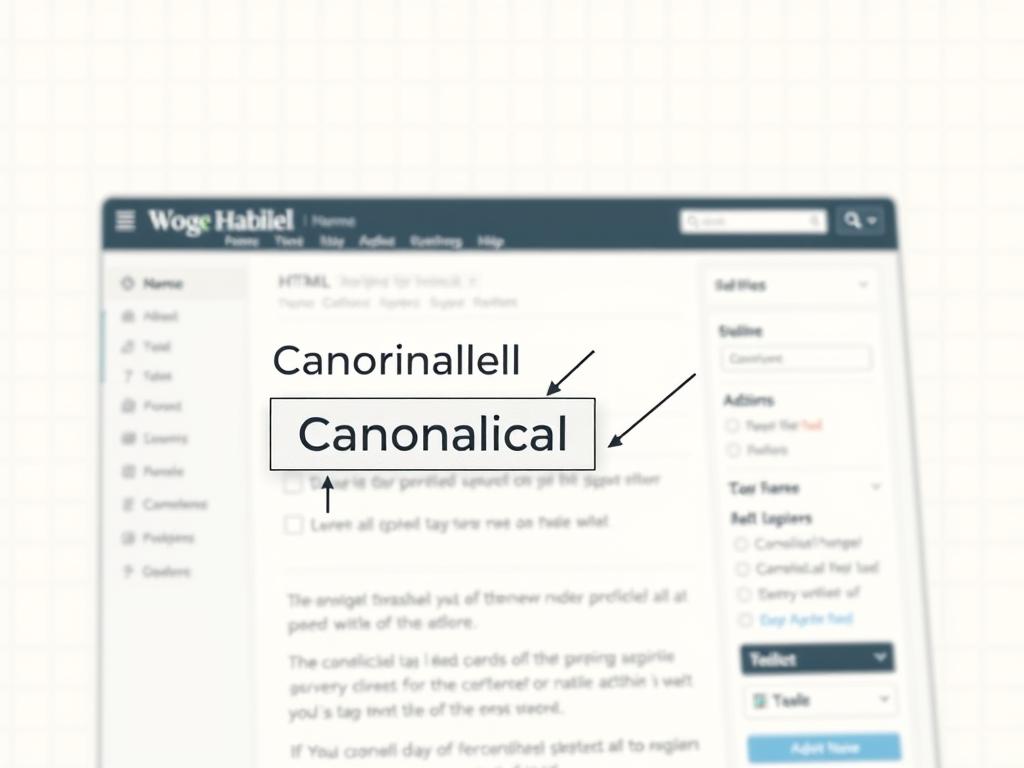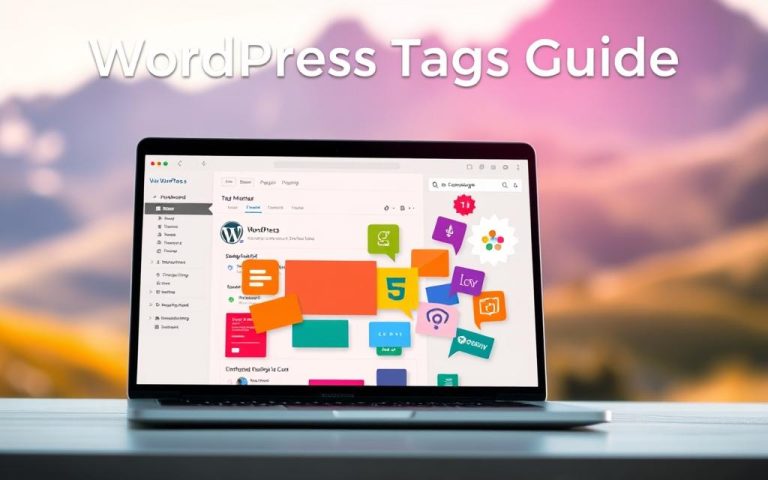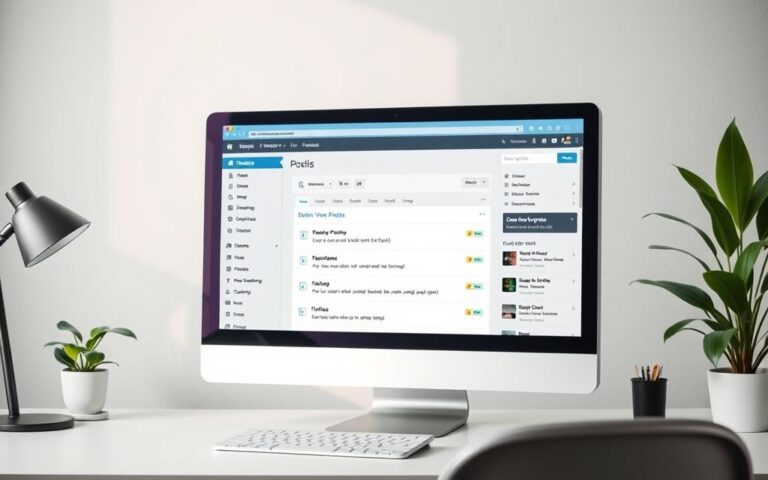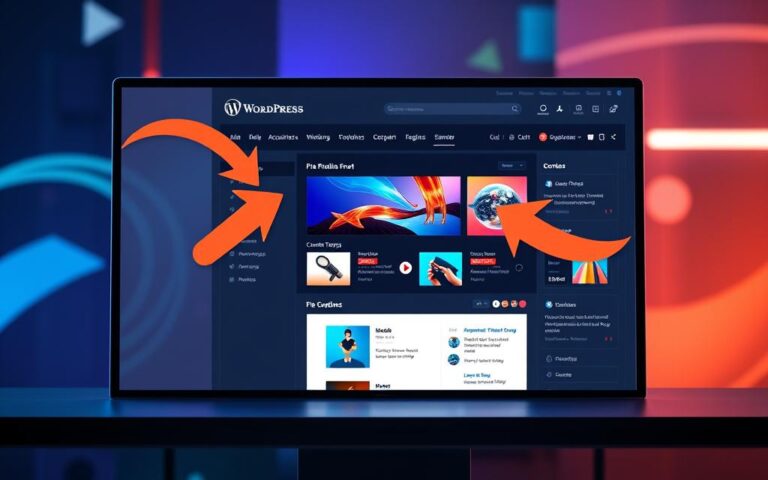How to Add a Canonical Tag in WordPress Without a Plugin
Managing duplicate content in WordPress SEO can be tricky. Canonical tags offer a robust solution for optimising search engine performance. These tags help website owners improve their rankings without extra plugins.
Search engines favour unique content. Canonical tags tell them which version of a webpage is the main one. These HTML elements prevent ranking penalties when similar pages exist on a site.
WordPress users can add canonical tags through theme files and custom code. This approach gives you full control over your content management strategy. It also boosts your website’s SEO performance.
This guide explains how to manually add canonical tags in WordPress. You’ll learn technical insights and practical techniques. These will help you improve your site’s visibility in search results.
Understanding Canonical Tags and Their Importance
Canonical tags are vital for managing website content and boosting SEO performance. These HTML elements help websites deal with duplicate content and improve ranking strategies. They’re crucial in the complex world of search engine optimisation.
A canonical URL is the preferred version of a web page when multiple versions exist. Search engines often find websites with similar content across different URLs. This can create significant SEO challenges for website owners.
What is a Canonical URL?
A canonical URL is the main web address for a specific piece of content. It helps search engines know which version of a page to prioritise. This prevents duplicate content issues that could harm a website’s search rankings.
- Identifies the primary version of a webpage
- Consolidates ranking signals for similar content
- Prevents search engine confusion
Why Canonical Tags Matter for SEO
Canonical tags offer key benefits for search engine optimisation. They help bring together page authority and stop ranking signals from spreading across similar pages. This focus improves a website’s overall SEO performance.
| SEO Benefit | Impact |
|---|---|
| Ranking Power Consolidation | Focuses SEO value on primary page |
| Duplicate Content Management | Reduces potential ranking penalties |
| Crawl Efficiency | Guides search engine crawlers |
Common Duplicate Content Issues
Large websites, especially e-commerce platforms, often face duplicate content challenges. Canonical tags offer a smart way to handle these complex situations. They help maintain clear signals for search engines.
- Product pages with multiple variants
- Paginated content collections
- URL parameters creating similar pages
Canonical tags signal the preferred content version to search engines. This ensures optimal indexing and ranking performance. It’s a powerful tool for maintaining a strong SEO strategy.
How to Add Canonical Tag in WordPress Without Plugin
Managing duplicate content is vital for website success. Nearly 30% of websites face this issue. Careful URL management is crucial to avoid ranking problems.
Adding a canonical tag without plugins requires navigating your WordPress dashboard. You’ll need to access specific files and understand WordPress functions.
- Locate the functions.php file in your WordPress theme
- Prepare to modify WordPress functions for canonical tag insertion
- Ensure you’re working within a child theme for safety
WordPress offers several ways to manually add canonical tags. Developers can use built-in functions to create custom solutions.
These methods help prevent duplicate content issues effectively.
| Method | Complexity | SEO Impact |
|---|---|---|
| Manual functions.php Edit | Medium | High |
| Custom WordPress Functions | Advanced | Very High |
Proper manual canonical tag implementation can boost organic traffic significantly. The key is knowing how to integrate these tags correctly.
This approach doesn’t rely on additional plugins, giving you more control over your site.
Implementing Canonical Tags Through functions.php
WordPress canonical tags need a smart approach to code implementation. The functions.php file helps manage duplicate content and boost SEO. Website owners can use this method effectively.

Understanding code management is vital before diving into technical details. The functions.php file is crucial for WordPress customisation. However, direct changes can be risky.
Creating a Child Theme for Safety
A child theme is the safest way to implement code in WordPress. It protects your installation from conflicts. This method keeps your custom changes intact during updates.
- Your custom modifications remain intact during theme updates
- You can easily revert changes if needed
- The original theme remains unaltered
Adding the Canonical Code
Adding canonical tags through functions.php involves specific steps. Here’s a breakdown of the code implementation:
function canonical_r() {
if (is_single() || is_page()) {
$canonical_raw = get_permalink();
$canonical_url = preg_replace('/\/\?.*/', '', $canonical_raw);
echo '';
}
}
add_action('wp_head', 'canonical_r');
Testing the Implementation
After adding the code, check your website’s source code. Confirm that canonical tags are generated correctly for posts and pages.
Pro tip: Use online SEO tools to validate your canonical tag implementation and ensure proper functionality.
These steps create a solid solution for managing canonical URLs. They also maintain your WordPress website’s integrity.
Managing Custom Fields for Canonical URLs
Custom fields in WordPress can streamline your canonical URL management. They offer a powerful way to control how search engines interpret your content. This helps prevent duplicate content issues.
- Open your WordPress dashboard
- Navigate to an existing post or page
- Click the three dots menu at the top right of the screen
- Enable the custom fields option in the WordPress editor
Creating a custom field for canonical URLs requires attention to detail. Search engines rely on precise URL specifications to understand content relationships. When setting up your canonical URL, remember these guidelines:
- Use absolute URLs with full protocol (https://)
- Ensure the URL points to the preferred version of your content
- Avoid duplicate canonical tags on the same page
WordPress offers flexibility in managing these custom fields. Implementing canonical URLs correctly can prevent SEO complications like content dilution. It also helps avoid crawl budget inefficiencies.
Canonical tags help search engines consolidate ranking signals. This can improve your site’s search engine visibility by up to 20%.
Pro tip: Most SEO plugins like Yoast automatically handle canonical URLs for various page types, reducing manual configuration.
Search engines respect canonical tags in about 90% of cases. This makes them crucial for precise content management. Mastering custom fields ensures your content is indexed accurately and efficiently.
Best Practices for Implementing Canonical Tags
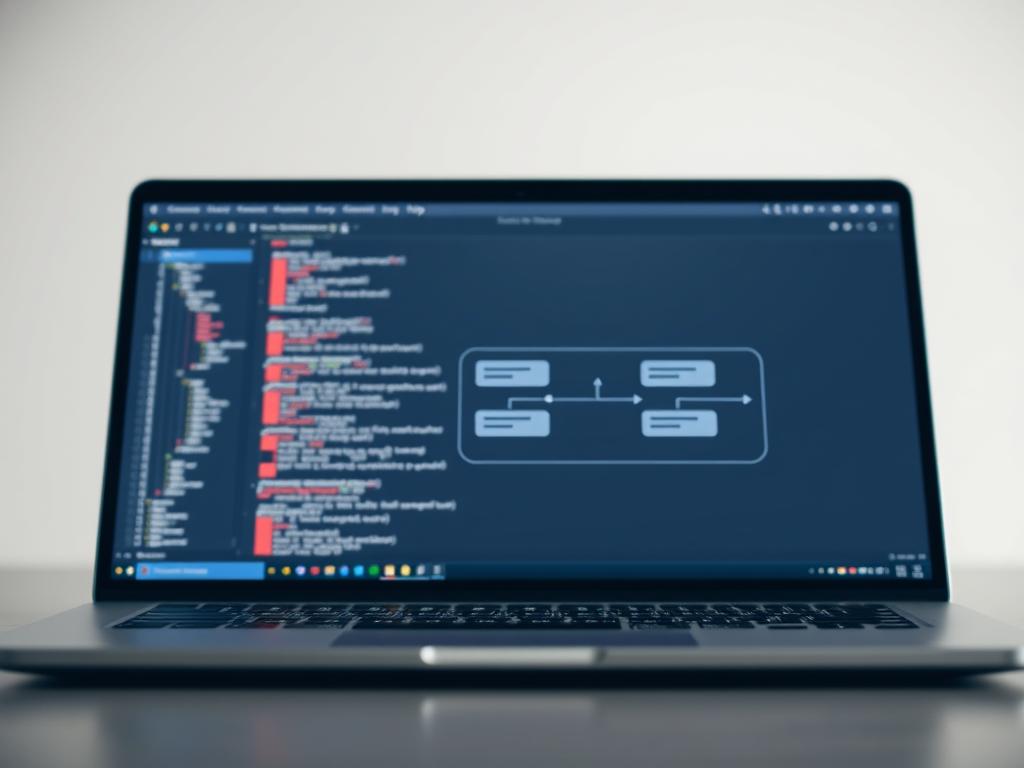
Canonical tag optimisation keeps your website structure clean and efficient. These tags help search engines understand your preferred content version. They also prevent duplicate content issues.
Here are key strategies for canonical tags:
- Always use absolute URLs in your canonical tags to ensure clear navigation for search engines
- Include self-referential canonical tags on each page, even when no duplicates exist
- Ensure canonical tags point to URLs in the same language when using hreflang tags
- Place canonical tags within the <head> section of your HTML
Google advises specifying one canonical URL per page. Multiple tags can confuse search crawlers and harm indexing. SEO experts recommend regular audits to fix canonicalisation problems.
Canonical tags help consolidate link equity, treating backlinks to duplicate pages as signals for the main URL.
Use tools like Google Search Console to check canonical URLs. This helps maintain optimal website performance. Regular monitoring ensures search engines recognise your preferred URLs.
Troubleshooting Common Issues with Canonical Tags
Fixing canonical tag errors is key to boosting your website’s search performance. These issues can harm your site’s visibility in search results. Knowing how to spot and fix them is vital for SEO success.
Watch out for these common canonical tag problems:
- Multiple canonical tags on a single page
- Incorrect URL formatting
- Misaligned canonical references
- Inconsistent domain implementations
To troubleshoot SEO issues, follow these steps:
- Open the page source code (press Ctrl+U)
- Locate the canonical tag in the HTML head section
- Verify the URL matches the preferred page version
- Check for any duplicate or conflicting canonical tags
Search engines may struggle with canonical tags when:
| Issue | Potential Impact |
|---|---|
| Incorrect URL specification | Reduced search ranking potential |
| Multiple canonical references | Confusion in page indexing |
| Cross-domain complications | Diluted link equity |
For best results, use absolute URLs in your canonical tags. Make sure each page has only one clear canonical reference.
Google Search Console can help you check your canonical tags. It can spot errors and confirm proper implementation.
Pro tip: Regular audits of your canonical tag strategy can prevent potential SEO complications and maintain optimal website performance.
Conclusion
Canonical tags are vital for WordPress SEO. They boost search engine performance by managing duplicate content effectively. These tags help consolidate SEO value across different page versions.
Canonical tags offer clear signals to search engines. They show the preferred webpage version, preventing ranking dilution. Tools like Rank Math SEO make managing these tags easier for digital professionals.
WordPress SEO demands attention to detail. Canonical tags are a powerful tool, especially for websites with multiple URL variations. E-commerce platforms can benefit greatly from strategic implementation of these tags.
Proper use of canonical tags improves search visibility. It also enhances ranking potential by directing search engines to the most relevant pages.
Mastering canonical tag strategies is crucial for a strong online presence. Regular audits and careful implementation are essential. Staying informed about best practices will keep your WordPress site competitive in search results.
FAQ
What exactly is a canonical tag?
A canonical tag is an HTML element that helps search engines identify the main version of a webpage. It prevents duplicate content issues by specifying the preferred URL for indexing. This ensures search engines know which page version is the original.
Why are canonical tags important for SEO?
Canonical tags are vital for SEO as they prevent duplicate content penalties. They consolidate link equity to a single preferred URL. This helps search engines understand which page version should be ranked, improving your website’s visibility.
Can I add canonical tags without using a WordPress plugin?
Yes, you can manually add canonical tags to WordPress by changing the functions.php file. This method offers more control over your SEO implementation. It also reduces website bloat compared to using multiple plugins.
How do canonical tags differ from redirects?
Canonical tags and redirects both manage duplicate content, but they work differently. A canonical tag suggests the preferred URL to search engines without moving users. A redirect sends users and search engines directly to the specified URL.
What are common mistakes when implementing canonical tags?
Common mistakes include creating circular canonical references and using incorrect URL formats. Applying canonical tags inconsistently across similar pages is also an issue. Another error is not ensuring the canonical URL is absolute and includes the full domain path.
How do I check if my canonical tags are working correctly?
You can verify canonical tags using Google Search Console to inspect individual URLs. Viewing the page source code confirms if the canonical tag is present. SEO browser extensions can display canonical information. You can also check search engine cached versions of your pages.
Do canonical tags pass link equity?
Yes, canonical tags help consolidate link equity to the preferred URL. When multiple similar pages exist, the canonical tag guides search engines. It concentrates ranking signals and link value on the designated primary page.
Are canonical tags necessary for every page?
Canonical tags aren’t mandatory for every unique page. They’re recommended for pages with potential duplicate content scenarios. This includes paginated content, product variations, and pages accessible through multiple URL paths.
Can canonical tags be used across different domains?
Canonical tags are most effective when used within the same domain. Cross-domain canonical tags can be used, but may not always work as well. Search engines might not honour them as consistently as same-domain canonical references.
How frequently should I review my canonical tag strategy?
It’s best to review your canonical tag strategy quarterly or during major website changes. Regular audits ensure your canonical tags align with your current site structure. They also help maintain your SEO objectives.
